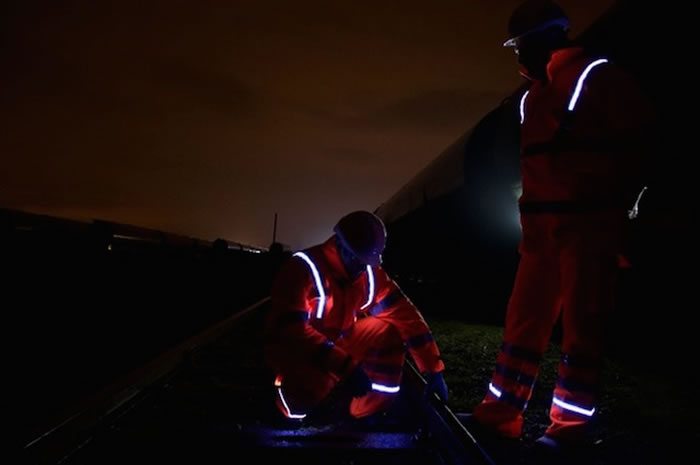Conventional high visibility clothing relies on secondary lighting to reflect the light back. However, if high visibility clothing is used in poor or non-illuminated areas it often cannot be seen. Fhoss Powered Light safety wear provides a constant glow, thus allowing the person wearing Fhoss to always be seen.
Fhoss constantly looking to innovate its technology into new products further enhancing the user’s personal safety. The company works closely with end user organisations with staff working in hazardous environments in addition to recognised safety organisations. This helps it develop new products that are pertinent to roadside, rail, mining and other hazardous places of work.
Fhoss is at the beginning of its journey to help improve the safety of individuals who work, commute or exercise in poor light or darkness. The products are suitable for international markets in a broad spectrum of industry verticals.
The safety principles encompassed in illuminated Fhoss safety garments are well illustrated by the enactment by a number of countries of Daytime Running Lights (DRLs) requirements under European Union Directive 2008/89/EC.
Several countries, especially those in high northern latitudes have mandatory use of DRLs, including Finland, Denmark, Hungary, Iceland, Norway, Sweden and Canada. The EU requires DRLs for all new cars and small vans first type approved after February 2011, extending to lorries and buses from August 2012.
Visibility plays a significant part in protecting against injury. This was highlighted in Rail Accident Investigation Branch report, no. 21 2008 in respect of a trackside fatality (see extract below). The use of Fhoss illuminated garments is likely to have avoided this type of fatality.
Fhoss products provide better visibility of the user. Current high visibility protective clothing, both glass bead and prismatic reflective tape, rely entirely on an external light source to hit the target garment and provide the emission of reflective light.
Fhoss Technology® combines the use of prismatic reflective tape and electro-luminescent lighting, enhancing the degree of light emission and the visibility of the user whether a second light source is available or not.
Contribution:
Fhoss Technology Ltd
Guy Watson,
www.fhoss.com

